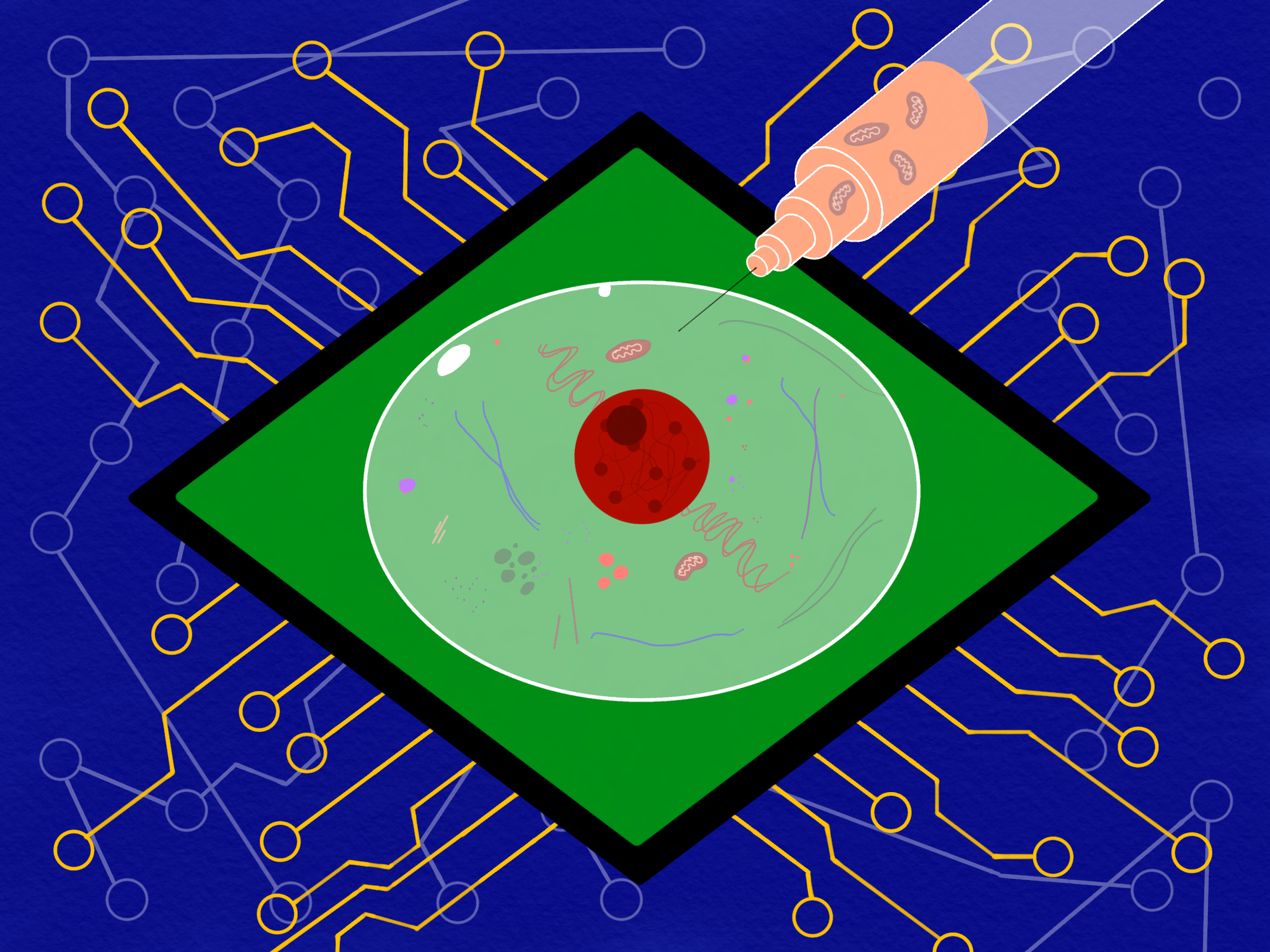UCLA researchers develop new technology allowing for greater mitochondrial research

(Shruti Iyer/Daily Bruin senior staff)
By Madelynn Mackenzie
Feb. 2, 2021 3:36 p.m.
UCLA researchers can transfer mitochondria from one cell into another reprogrammable cell at a high rate using a newly developed technology called MitoPunch, according to UCLA research published in late December.
MitoPunch enables researchers to mass produce reprogrammable cells with specific mitochondrial and nuclear DNA pairings, said Alexander Patananan, a co-lead author of the study and postdoctoral scholar. Mitochondria are the component of a cell which generates energy for the cell.
The correct DNA combination is crucial for mitochondria to function properly, said Michael Teitell, a pathology and laboratory medicine professor.
If the DNA sequences in the mitochondria and the nucleus do not match up, a person may develop diseases like MELAS Syndrome which frequently causes neurodegeneration and MERRF Syndrome which results in loss of muscle function, said Alexander Sercel, a co-lead author of the study and a molecular biology doctoral student. Sercel added that the field of mitochondrial research does not fully understand why these mitochondrial diseases present differently from person to person, or even from tissue to tissue within the same individual.
MitoPunch could reveal the answer.
This tool allows researchers to transfer mitochondria between cells in order to recreate specific mitochondrial and nuclear DNA pairings associated with a disease in order to study the presentation of the disease in greater depth, Patananan said.
This research could also be developed into cellular therapies to produce cells that have specific nuclear and mitochondrial DNA combinations, Patananan added.
There are methods to add and delete portions of nucleic DNA in order to edit the genome, but these techniques cannot be used to edit mitochondrial DNA, Patananan said. To create a new DNA pairing in a cell using MitoPunch, first the existing mitochondrial DNA is wiped from the cells, then the device adds in mitochondria from a different cell containing a different DNA sequence, Patananan said.
According to the study, MitoPunch uses a chamber filled with mitochondria covered with a layer of cells. When the chamber is pressurized, cells are punctured and mitochondria are pushed up through a filter into a new cell, as mentioned in the study.
Unlike past methods that could only transfer mitochondria into cells one cell at a time, MitoPunch can transfer mitochondria into 100,000 cells or more within a second, said Teitell, who is also the director of the UCLA Jonsson Comprehensive Cancer Center.
Mitochondria are typically studied in cancer cells because current cell hybridization techniques used to create specific mitochondrial DNA and nucleic DNA pairings require immortal cells, Teitell said. However, cancer cells are malignant and cannot be reprogrammed into new functional cells capable of regenerating tissue, he added.
MitoPunch enables mitochondria to be transferred into cells with this capability.
This study was the first to transfer mitochondria into a noncancerous human cell that was then transformed into a stem cell capable of changing into almost any other cell in the body, Patananan said.
“With this tool, we can now model the interactions between the mitochondrial and nuclear DNA in more clinically relevant contexts,” Sercel said.
Instead of using unrelated cancer cells, researchers can use this technique to examine mitochondrial function in tissues most relevant to mitochondrial diseases, such as those in the nervous system and cardiovascular system, Sercel added.
MitoPunch also makes mitochondrial research more accessible through reduced costs.
This new technology is inexpensive and easy to use, allowing more research labs to investigate mitochondrial and nuclear DNA pairings, as well as engineer programmable human cells, Teitell said.
“The whole thing costs about 50 bucks to make,” Sercel said.


